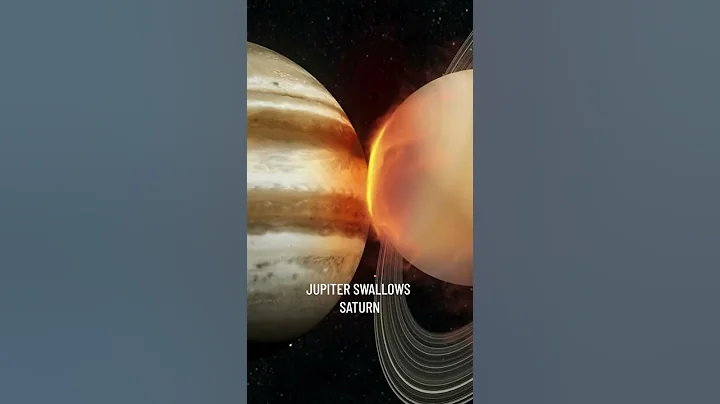Let's take a look at Saturn first: Saturn is a gas giant planet . Its internal core consists of rock and ice, and its periphery is covered by several layers of metallic hydrogen and gas. The outermost atmosphere is usually bland in appearance, although long-lasting features sometimes appear. Saturn's wind speed is as high as 1800 kilometers per hour.
This illustrates several points:
1. Saturn itself is not suitable for immigration because the surface living conditions are too poor.
2. Saturn is rich in resources. It is feasible to suspend balloons in the atmosphere of Saturn and absorb hydrogen through pod and extension tubes.
Let’s turn our attention to Saturn’s rings : Saturn’s rings are a material system of countless small satellites rotating around Saturn on the equatorial plane of Saturn. The rings of Saturn are located on the equatorial plane of Saturn. Before space exploration, it was known from ground observations that Saturn has five rings, including three main rings (A ring, B ring, C ring) and two dark rings (D ring, E ring). The B ring is wide and bright. Its inner side is , C ring , and its outer side is A ring. Between the rings A and B is the Cassini gap, which is about 4,800 kilometers wide. It was discovered by astronomer Cassini in 1675. The reason for the gap is that there are satellites operating in the ring and the gravity of the satellites. The B ring has an inner radius of 91,500 kilometers, an outer radius of 116,500 kilometers, and a width of 25,000 kilometers. It can accommodate two Earths side by side.
This explains several points:
1. The fact that Saturn's rings can exist for a long time shows that there is a gravitational balance that prevents these materials from falling into Saturn after billions of years. Therefore, it is impossible for humans living in the rings of Saturn to suddenly fall into Saturn.
2. Saturn’s rings are rich in material.
Therefore, we can design an ontology spacecraft, then fly to the rings of Saturn, and then absorb the resources of the rings of Saturn to continuously expand the area of spacecraft . Eventually, an artificial Saturn ring is formed, with an area that can be as high as tens of thousands of times the surface area of the Earth. The resources required to leave and enter the rings of Saturn should not be large, and there is no need to land or take off. Because of the gravitational balance, a slight reaction force is enough.
Let’s look further ahead: there is a huge “invisible” halo around Saturn, which can accommodate 1 billion earths. NASA's Jet Propulsion Laboratory said that the ring plane is tilted at an angle of 27 degrees to the main ring plane of Saturn. The inner side of the ring is about 5.95 million kilometers away from Saturn and about 11.9 million kilometers wide. Its diameter is equivalent to 300 times the diameter of Saturn. Can accommodate approximately 1 billion Earths. The rings are composed of ice and dust particles. The distance between them is so large that you can't see clearly even if you stand on the rings. In addition, Saturn receives very little sunlight and the rings reflect even less visible light, making it difficult to detect. It was found that the dust making up the halo has a very low temperature, only -193°C, but it emits thermal radiation.
One billion earths, wow, good guy, this is the guarantee of resources. So, if humans go to settle in the rings of Saturn, they will definitely be in a golden nest, with no worries about food and clothing. Of course, the premise is that the medium-sized controllable nuclear fusion can be successful. If this is successful, there will be few other difficulties, which are all what Newton taught us.











![Journey to the Gas Giants [4K] - DayDayNews](https://i.ytimg.com/vi/ZW6jzX5doBg/hq720.jpg?sqp=-oaymwEcCNAFEJQDSFXyq4qpAw4IARUAAIhCGAFwAcABBg==&rs=AOn4CLDi83c0ItKzObPwYQGh3W93WPwJsQ)










